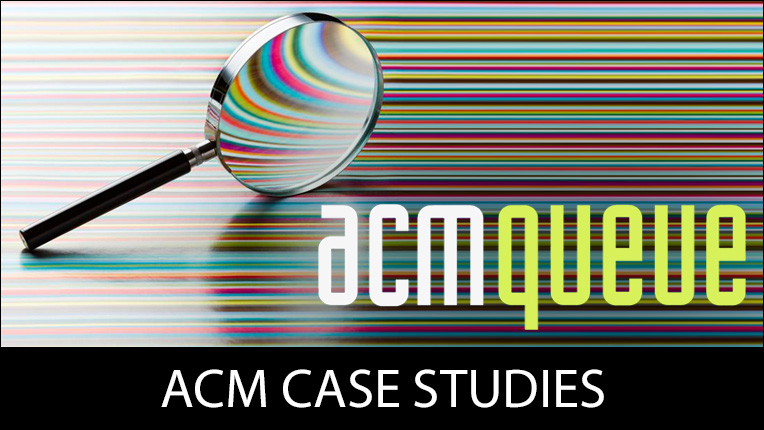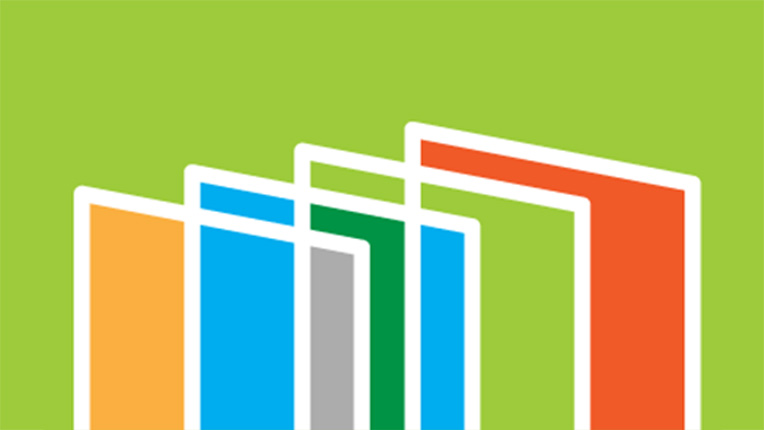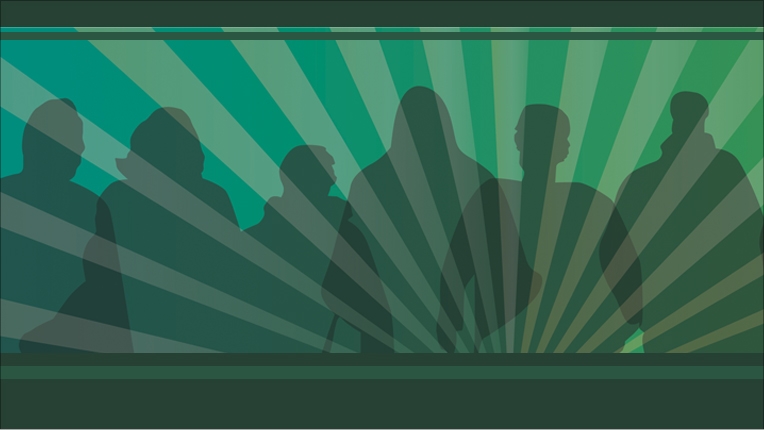Frequently Asked Questions
ACM Policy on Authorship
Can I use generative AI software tools to prepare my manuscript?
Yes, the use of such tools is permitted, subject to the following requirements:
- That these systems do not plagiarize, misrepresent, or falsify content in ACM submissions.
- That the resulting Work in its totality is an accurate representation of the authors’ underlying work and novel intellectual contributions and is not primarily the result of the tool’s generative capabilities.
- That the authors accept responsibility for the veracity and correctness of all material in their Work, including any computer-generated material.
If I use generative AI software tools, under what conditions must I disclose their use in my Work?
Today’s generative AI software tools perform different tasks and it is reasonable to expect that their use and use cases will expand and become more robust over time. Whether disclosure in your published ACM Work is necessary depends on how you utilize these tools. The following guidelines should be followed when determining whether and to what extent disclosure must be provided in your Work.
- If you are using generative AI software tools such as ChatGPT, Jasper, AI-Writer, Lex, or other similar tools to generate new content such as text, images, tables, code, etc. you must disclose their use in either the acknowledgements section of the Work or elsewhere in the Work prominently. The level of disclosure should be commensurate with the proportion of new text or content generated by these tools.
- If entire sections of a Work, including tables, graphs, images, and other content were generated by one of these tools, you should disclose which sections and which tools and tool versions you used to generate those sections by preparing an Appendix or a Supplementary Material document that describes the use, including but not limited to the specific tools and versions, the text of the prompts provided as input, and any post-generation editing (such as rephrasing the generated text). Authors should also note that the amount or type of generated text allowable may vary depending on the type of the section or paper affected. For example, using such tools to generate portions of a Related Work section is fundamentally different than generating novel results or interpretations.
- If the amount of text being generated is small (limited to phrases or sentences), then it would be sufficient to add a footnote to the relevant section of the submission utilizing the system(s) and include a general disclaimer in the Acknowledgements section.
- If you are using generative AI software tools to edit and improve the quality of your existing text in much the same way you would use a typing assistant like Grammarly to improve spelling, grammar, punctuation, clarity, engagement or to use a basic word processing system to correct spelling or grammar, it is not necessary to disclose such usage of these tools in your Work.
Can a generative AI tool be listed as an author?
No, generative AI software tools cannot be listed as authors on ACM Works under any conditions.
When choosing my co-authors, what criteria are considered acceptable by ACM?
All co-authors must meet the ACM Criteria for Authorship listed in the ACM Policy on Authorship. Generative AI tools cannot be listed as authors. All individuals who meet the ACM Criteria for Authorship should be listed as authors on the Work.
Individuals who meet the authorship criteria, but who die or become incapacitated prior to publication, can be listed as co-authors with permission of their estate or next of kin. In such situations, it is recommended that an explanatory footnote be included.
Are all co-authors equally responsible for the Work?
All co-authors take full responsibility for all content in their published Works. However, in the case of publications-related misconduct, individual co-authors may have different penalties levied upon them depending on their specific contributions and actions.
What is the role of the Corresponding Author?
ACM requires that every submitted and published Work be assigned a single Corresponding Author. This Corresponding Author will be responsible for all direct communication and correspondence with ACM. They will also be responsible for obtaining ORCIDs from all listed co-authors, collecting and communicating declarations of potential Conflicts of Interest in connection with their papers on behalf of all listed co-authors, and completing ACM’s Rights Assignment process for their Work. The Corresponding Author is often the first-named author on the Work, but this need not be the case. The co-authors determine which author shall be the Corresponding Author for the Work, but there may only be one Corresponding Author. For some ACM publications, the Corresponding Author may be assigned at the time of manuscript submission (in the submission system) and may be changed after acceptance, but prior to completion of the rights process.
Does the ACM Policy on Authorship apply to abstracts?
Yes, the ACM Policy on Authorship applies to abstracts.
What are the unacceptable authorship practices that ACM authors, editors, and PC chairs should be aware of?
In recent years, ACM has seen a dramatic rise in the level of unacceptable authorship practices, which undermines the integrity of the scholarly record, the community's trust in the published research and scholarship, and ACM's reputation. The following authorship practices are unacceptable to ACM and will be treated as violations of ACM's Authorship Policy:
- Anonymous Authorship – when all or some authors are unnamed or listed as “Anonymous” and do not provide full contact information to ACM. Please note that this is different from the use of pseudonyms and/or pen names, which is permitted, provided accurate contact information is given to ACM.
- Collective Authorship – authorship is attributed to a group or community rather than to individuals.
- Gift Authorship – when co-authorship is given as a reward, payment, or incentive to someone who did not contribute significantly to a Work. This is otherwise known as "quid pro quo authorship." An example would be accepting an offer to be listed as co-author on a Work in exchange for performing a pre-submission review of the Work.
- Guest Authorship – when co-authorship is given due to reputation or influence of someone who did not contribute significantly to a Work in order to increase the likelihood of acceptance of the submitted Work. Guest Authorship and Gift Authorship are often closely related.
- Ghost Authorship* – when co-authorship by someone who did contribute significantly to a Work is concealed to hide a potential conflict of interest with reviewers, hide an author who drafts a Work on behalf of an industry backer, or in some other way deceive the reader about the authors involved. ACM views ghost authorship as problematic, since the ghost author is not in a position to verify the validity of the content of the article…only to ensure that the article is readable and clearly presented, which is why ghost authors do not meet ACM’s criteria for authorship.
* – There is an exception to this Policy which allows for the use of “Ghost Writing” when the use of an unnamed Ghost Author is being utilized for the sole purpose of editing and improving text in much the same way a copy editor or software tool would be used to improve the quality of the Work similarly to the requirement to disclose the use of generative AI tools when they are used to generate new content versus their use to simply improve the quality of the Work. - Purchased Authorship – when authorship or co-authorship is given in exchange for payment to someone who did not contribute in any way to the Work. There are various forms of Purchased Authorship. One form would be a Paper Mill, which sells an “acceptance” and “authorship” of a Work, typically without a legitimate peer review or quality control process. This tends to take the form of an organized money-making scheme by an individual or organization. One author of a submitted or accepted Work offering to list an individual as co-author on that Work in exchange for a financial payment is another form of Purchased Authorship.
- PaperMills – profit-oriented, unofficial, and potentially illegal organizations that produce or facilitate the production and sale of fraudulent publications which are intended to deceive the Publisher and the research community. This may include the use of AI software tools to generate entire Works, or organizations that present themselves to the research community as legitimate publication venues (e.g., conferences, journals, special issues, etc). ACM has seen a rise in the number of such organizations which deceive members of the community into thinking they are submitting their Work to legitimate conferences. Members of the computing community should be very careful to ensure they are not submitting their papers to such “Paper Mills,” as this could result in a violation of ACM’s Policies and the retraction of their published Work from the ACM Digital Library.
- Citation Manipulation - there are various types of citation manipulation that are generally considered to be inappropriate by ACM, which follows the guidelines established by COPE, as follows:
- Excessive citation of an author’s research by the author (ie, self-citation by authors) as a means solely of increasing the number of citations of the author’s work;
- Excessive citation of articles from the journal in which the author is publishing a research article as a means solely of increasing the number of citations of the journal;
- Excessive citation of the work of another author or journal, sometimes referred to as ‘honorary’ citations (eg, the editor-in-chief of the journal to which one is submitting a manuscript or a well-known scholar in the field of the researcher) or ‘citation stacking’ solely to contribute to the citations of the author(s)/ journal(s) in question.
As indicated above, if I use a Ghost Author for the sole purpose of editing and improving the quality of my Work, am I required to disclosure the use of a Ghost Author?
If ghost authors are being used for the sole purpose of editing and improving the quality of the Work and not to generate significant new content, then it is acceptable to use such ghost authors and there is no need to disclose their use.
Why does ACM not allow Anonymous Authorship?
ACM’s authorship policy requires that authors must be accountable for the work that was done and its presentation in a publication. If authors are anonymous and do ot provide accurate contact information to ACM, they cannot fulfil the requirement of taking responsibility for the Work, in particular should a potential research integrity issue related to the Work need to be investigated.
Note that ACM does permit the use of pseudonyms and/or pen names, provided accurate contact information is given to ACM.
Why does ACM not allow Collective Authorship?
ACM requires authors to be named individuals, since we require all individuals who meet the criteria for authorship individually to be held accountable for the work that was done and its presentation in a publication. Where a community contributed collectively to the authorship, each individual member of the community who meets the criteria for authorship should be listed as a co-author on the paper. The community as a whole can be recognized in the acknowledgements section.
ACM Case Studies
Written by leading domain experts for software engineers, ACM Case Studies provide an in-depth look at how software teams overcome specific challenges by implementing new technologies, adopting new practices, or a combination of both. Often through first-hand accounts, these pieces explore what the challenges were, the tools and techniques that were used to combat them, and the solution that was achieved.

Lifelong Learning
ACM offers lifelong learning resources including online books and courses from Skillsoft, TechTalks on the hottest topics in computing and IT, and more.

